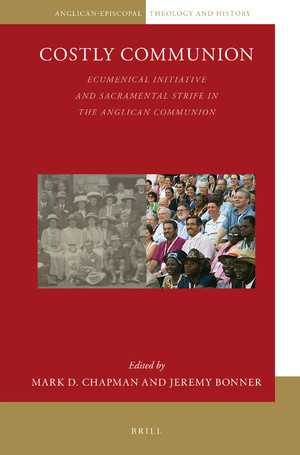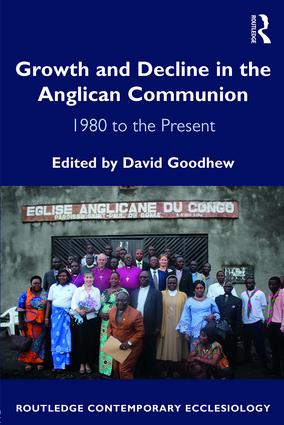Becoming Icons: Trinity Cathedral’s Search for Graced Space
Today, members of the chapter of Trinity Cathedral, Pittsburgh, met for their annual retreat, seeking to discern the new fields of mission to which their Lord was calling them. No great novelty, except for the fact that attendees included elected representatives of the Episcopal Diocese of Pittsburgh (Southern Cone) and the Episcopal Diocese of Pittsburgh of the Episcopal Church of the United States of America and – seated next to one another – Bishop Robert Duncan of the Province of the Southern Cone and Assisting Bishop Robert Johnson of the Episcopal Church. Back in June, when we first passed our now infamous resolution pledging continued participation in both prospective Anglican entities, few would have imagined such a gathering, yet here, in the shadow of renewed legal rumblings in Pittsburgh, Trinity Cathedral continues her mission as mother to, as Bishop Duncan put it, “two children it both wants to prosper.”
For those outside Pittsburgh, our story may require elaboration. In the last decade we have lived a precarious existence, groping for identity as our congregation hemorrhaged members and maintenance costs steadily increased. Fewer and fewer people have been willing to navigate the confusing byways of Pittsburgh’s business district to join us in worship, while the pastoral needs of the local homeless population have taken their toll on the small body of parishioners with time to contribute to outreach. Maintenance-to-mission may have been the slogan of the Duncan episcopate, but it is been hard to get beyond maintenance when one has a structure of our size with which to contend. Now, as the recession slashes our endowment to the edge of fiscal viability, we are obliged to contemplate a dramatic change in vision.
In this context, it is excusable for outsiders to read our resolution as simply an effort to remain a viable congregation, while staying out of the present legal fray. Such is not out intent. Composed as we are of a blend of institutional liberals and moderates, communion conservatives and a few federal conservatives, we recognize that our resolution can be effective only with a degree of self-discipline. We are not Laodiceans. Our vision – “To Be a Missionary Cathedral Building Up a Missionary People of God” – embodies a commitment to the continued need for relationship between those recently parted by realignment. Both new ecclesiastical entities contain within them the DNA of the former Episcopal Diocese of Pittsburgh. Looking toward the future, we must still account for our past. The commitments to “to forgive rather than retaliate” and “to heal hurts rather than nurse grudges” are not legalistic boilerplate, but an attempt to live into the ambiguities of our recent division.
We emerged from our retreat with the belief that we have the potential to promote our vision, even if the prevailing climate would have us act otherwise. Meditating on Ephesians 2: 11-22, we came to fresh understanding of the reconciling work of Christ on the Cross. We saw once more the ability of Jesus to lessen the pain even of the hurts that have recently been inflicted and endured in this part of Pennsylvania. Again and again, we heard from representatives of the realigned and reorganized dioceses, talk of what could still be shared, of ways in which we might still be in relationship with one another.
Our first acknowledged task is to define our identity as a congregation, for we have a need to grow and be fruitful and without vision we most definitely will perish. We have to learn to suit our very limited resources to what is achievable, to use the spiritual gifts of our congregation to best advantage, and to identify those constituencies whom we are best placed to serve. All of this is, of course, the standard work of parish profiling, yet beyond those fundamentals lies a deeper and more challenging objective: to model Christ in such a fashion that non-Anglican Pittsburghers will no longer think of us as the denomination that’s always in legal battles and that the Anglican community will have cause to downplay the adversarial nature of the conflict.
For some – perhaps for many – what we are seeking to do may seem at best fruitless and at worst harmful, and yet there is no other congregation with the institutional history to attempt it. We are the mother church that John Henry Hopkins fostered and from which Alfred Arundel sought to project a vision of pastoral care to those who would never have considered becoming Episcopalians. We have fought with bishops and with each other and yet have endured though the many twists and turns of Anglicanism in Pittsburgh. In 2008, the cleaning of our exterior as part of the diocesan anniversary celebration saw Trinity Cathedral emerge from the blackened deposits that had accumulated in the course of a century of industrial development, to reveal the almost golden sheen that it enjoyed at its erection. As an icon for our soon-to-be-released diocesan history – “Called Out of Darkness Into Marvelous Light – it reflects the hopes of those who seek a deeper reconciliation than a mere equitable division of assets (not that this would necessarily be a bad thing). Ultimately, however, we seek only to live out the vision to which we believe we have been called, always aware that “Our Help is in the Name of the Lord, who Hath made Heaven and Earth.”










2 comments:
It sounds like you're creating problems yourself by trying to solve this issue instead of looking at why their is a problem in the first place.
I'm not sure that I get your point. We're all too aware of why there is a problem. Many parishioners at Trinity are pretty clear where they stand (this year, 49.7% of our 58 pledge units redirected to TEC, 22.45% redirected to ACNA and 27.85% expressed no preference).
The issue has always been not whether we can play both ends against the middle, but if there is a mediatory role that Trinity can play in the life of both dioceses. It isn't always a pleasant position to be in, but the there is no promise of pleasantness in this phase of the Christian life.
One parishioner recently responded to the question of which side the cathedral was on by saying: “I chose to serve God and Jesus, not one side or the other . . . I’m on the cathedral’s side, the Mother Church of all Anglicans in the area.” It seems as good an answer as any.
Post a Comment